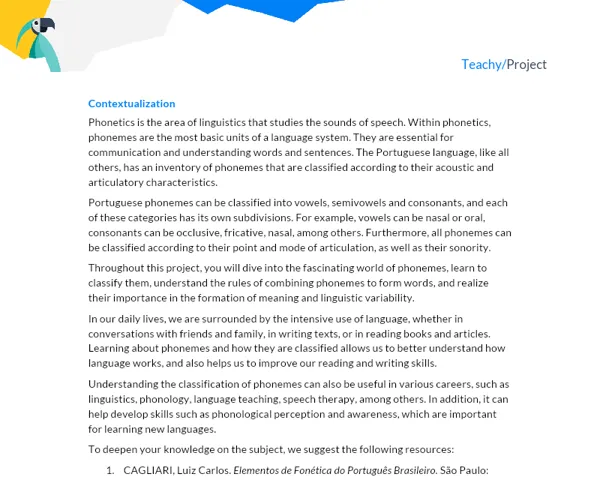Background
In linguistics, enunciation is the act of producing an utterance, understood as a block of discourse used in a specific context and conveying a complete idea. This utterance is not merely a sequence of words, but it carries with it information about the speaker (the enunciator), the receiver of the message (the enunciatee), the place, and the time of speaking.
In the field of grammar, enunciation is a key concept that helps us understand the structure and interpretation of sentences. A text, for example, is not just a sequence of sentences—it is a set of utterances, each with its own enunciator, enunciatee, and context. This information, often implicit, is crucial for understanding the meaning of the text and correctly interpreting the writer's intentions.
To understand more about enunciation, we must consider four main elements: the enunciator, the enunciatee, time, and space. The enunciator is the one who speaks or writes, and the enunciatee is the one to whom the message is intended. Time and space refer to the context in which the enunciation occurs; they guide and influence how we interpret the meaning of an utterance.
Enunciation plays a significant role in our daily communication. It is responsible for differentiating the meaning of a text, depending on who is enunciating it, to whom, and in what context. For example, the same sentence can have a different meaning if it is said by a child or by an adult, in a classroom or during a game.
Moreover, enunciation is also crucial in broader contexts, such as politics, the media, literature, advertising, and others. In these contexts, understanding the nuances of enunciation can help us decipher the underlying messages, the intentions of the enunciator, and the reactions of the enunciatee.
To better understand all this content, explore the following resources for reference and further study:
- "Problems in General Linguistics" by Émile Benveniste (1971). This classic in linguistics presents the theory of enunciation in a thorough and precise way. It is available in some libraries and bookstores.
- Videos by the YouTuber and Portuguese teacher Me Salva!, who approaches the theory of enunciation in a didactic and illustrative way.
- The discipline "Textual Linguistics: Enunciation" from the Distance Learning Languages course at the Federal University of Paraná, which offers video lessons and online study material.
Enunciation in Action Practical Activity
Project Objective
The objective of this practical project is to provide students with a deeper and more practical understanding of the concepts of enunciation, enunciator, enunciatee, time, and space in the context of Linguistics and Literature.
Detailed Project Description
Students, divided into groups of 3 to 5 members, will create a play, staging a dialogue that must be adapted from a known literary work. The chosen dialogue must contain at least four exchanges of speech between characters, allowing for the analysis of the concepts of enunciation. Furthermore, students must adapt this dialogue for two different contexts, modifying the enunciator, the enunciatee, time, and space to create new meanings.
Necessary Materials
- Books and/or online resources for research and study of the theoretical concepts.
- Resources for recording the play (a cell phone would suffice).
- Play written by the students.
Detailed Step-by-Step Instructions
- Students must choose a literary work and a dialogue from the work that they wish to adapt.
- After choosing the dialogue, students should study and discuss the concepts necessary to understand the enunciation in the chosen dialogue.
- Next, students must adapt the dialogue for two different contexts, guaranteeing that the enunciator, enunciatee, time, and space are changed. By doing this activity, students will be practicing their ability to understand the impact of enunciation on the meaning and interpretation of texts.
- After adapting the dialogue, students should write the script for their play, including detailed descriptions of the characters, setting, and actions that take place during the play. The play should be divided into three acts, the first with the original dialogue, the next two with the adaptations.
- Groups must then stage and record their play.
- Finally, students should write the project report, which discusses the choice of dialogue, the adaptation made, the understanding of theoretical concepts, and the experience of staging the play.
Project Deliverables
Groups must submit:
-
The script of the play in text format;
-
The recording of the play;
-
A written report discussing:
- The choice of dialogue and the reason for this choice (Introduction);
- The understanding of the concepts of enunciation, enunciator, enunciatee, time, and space (Development);
- The adaptation of the dialogue for two different contexts, and the analysis of how these changes affected the meaning of the play (Development);
- The conclusions drawn from the experience of adapting and staging the dialogue (Conclusion);
- The sources consulted during the project (Bibliography).
Each section of the report should reflect the students' understanding of the theory and practice of enunciation. It is important that the report makes clear connections between theory and practice, explaining how the staging of the play helped to understand the theoretical concepts.



